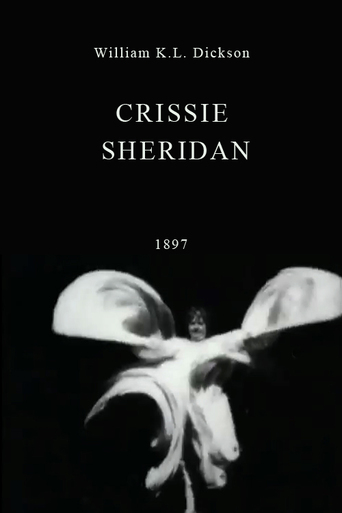

Who payed the critics
... View MoreBrilliant and touching
... View MoreIt's entirely possible that sending the audience out feeling lousy was intentional
... View MoreAt first rather annoying in its heavy emphasis on reenactments, this movie ultimately proves fascinating, simply because the complicated, highly dramatic tale it tells still almost defies belief.
... View MoreThis is very definitely not filmed by William Kennedy Dickson sho had left Edison by this time for Mutoscope but rather by William Heise. Crissie Sheridan seems to have been Edison's replacement for Annabelle Whitford Moore who had joined Kennedy at Mutoscope making for them amongst others a new variant of the Serpentine Dance called the Flag Dance where she wrapped herself in the national colours. This "serpentine dance in national colours" was the Edison response but was obviously originally hand-coloured so the full effect is rather lost in the available black and white copy which comes from the Library of Congress paper print collection.
... View MoreCrissie Sheridan (1897)You could show this 30 second movie to a million different people and I'm sure all but perhaps one would walk away not knowing what the big deal was. After all, there's no plot, no acting and no drama so why watch someones serpentine dance? Well, as a lover of these early movies, what's so fascinating about these early pictures is that without them, we probably wouldn't know who Crissie Sheridan was. I mean, I had never heard of her but by being able to watch this movie I can learn about her, see her work and just know that she was someone popular back in the day that has been forgotten through time. Even though she's forgotten, I can't help but wonder what she'd think about someone watching this film 118 years after it was made.
... View MoreI assume the name Crissie Sheridan was not a total unknown 115 years ago with early French-born and English-speaking film pioneer William K.L. Dickson using the dancer's name as the title for the film, while we, usually, in these early short films that involve some kind of sports activity or dancing or music usually get a description of the activity or the name of the profession.In any case, we see the obviously talented dancer Crissie Sheridan perform her routine with grace and elegance. The flowing of the serpentine in the air is surely a beautiful sight, which would have been even better with stunning colors or beautiful music to it, i.e. the way Dickson most likely actually saw it, but even silent and in black and white this short film is far from being a total miss.
... View MoreCinema is a window to immortality. The greatest theatrical actors and performers of the nineteenth century, however special they may have been, are now entirely lost to us. Of their greatness, we must take the word of their contemporaries. In the 1890s, all that began to change. 'Crissie Sheridan (1897),' an Edison film directed by William K.L. Dickson, is a brief snippet of a serpentine dance performance by the titular dancer, and, great or not, her performance still exists a century later for her great-great-great-great grandchildren to enjoy. The dance routine was an imitation of the Gaiety Girls, a chorus line of "respectable, elegant young ladies" from England, who attained considerable success in musical theatre. Flourishing a magnificent costume in all directions, Sheridan is almost completely hidden behind the twisting, pulsating fabrics of her dress. Other dance-orientated curios you might like to track down include 'A Nymph of the Waves (1900)' and 'Neptune's Daughters (1900),' both directed by Frederick S. Armitage.
... View More